- Home›
- Healthy Living›
- 8 Types Of Ab Crunches Exercises To Sculpt Your Way To A Flat Belly
8 Types Of Ab Crunches Exercises To Sculpt Your Way To A Flat Belly
By: Priyanka Maheshwari Fri, 30 June 2023 11:26:51
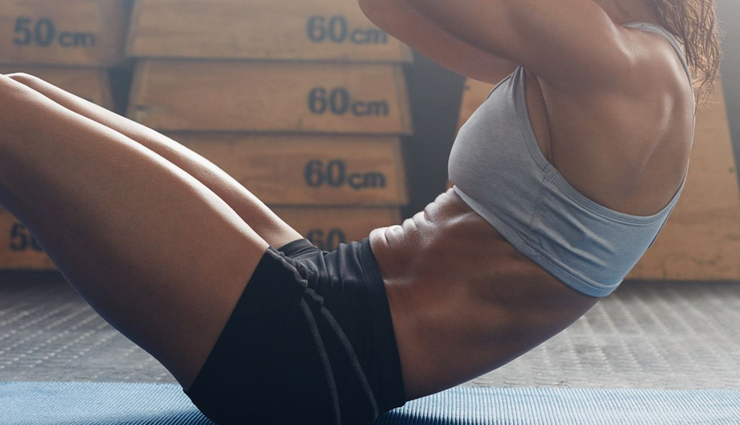
Achieving a flat belly and strong core requires dedication, consistency, and a combination of proper nutrition and targeted exercises. While there are numerous abdominal exercises available, crunches remain a staple for strengthening and toning your midsection. In this article, we will explore 8 different types of ab crunches exercises that can help you on your journey to a flat belly.
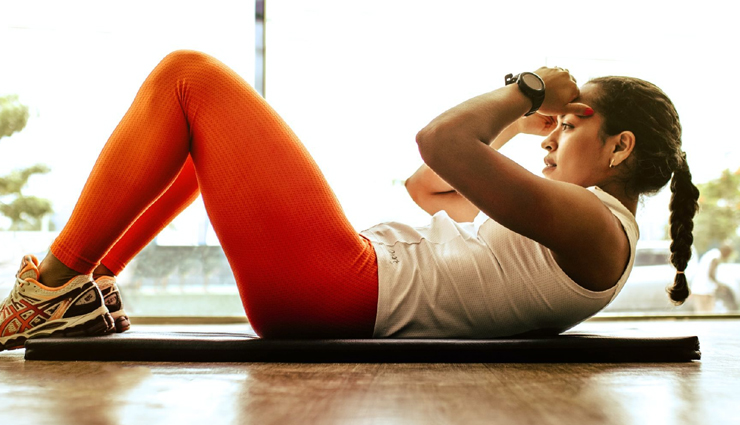
# Basic Crunch
The basic crunch is a fundamental exercise that targets the upper and lower abdominal muscles. Here are the steps to perform the Basic Crunch exercise:
- Lie flat on your back on a mat or a comfortable surface with your knees bent and feet flat on the floor. Keep your arms relaxed by your sides or crossed over your chest.
- Engage your core muscles by drawing your navel towards your spine and pressing your lower back into the mat.
- Inhale deeply, and as you exhale, lift your head, neck, and shoulders off the mat, curling your upper body forward.
- Focus on using your abdominal muscles to initiate the movement, rather than relying on momentum or pulling with your neck.
- Keep your lower back in contact with the mat throughout the exercise to maintain proper form and protect your spine.
- Hold the contracted position for a brief moment, squeezing your abdominal muscles.
- Inhale again, and as you exhale, slowly lower your upper body back down to the starting position with control.
- Repeat the movement for the desired number of repetitions, focusing on engaging your core and maintaining proper form.
- Remember to breathe continuously, inhaling before lifting your body and exhaling as you lower it back down.
- Avoid any jerky or forced movements and maintain a steady and controlled rhythm.
- If you find it challenging to keep your feet on the ground, you can anchor them by placing them under a sturdy object or have a partner hold them.
- As you progress, you can make the exercise more challenging by adding weights or incorporating variations such as twisting or incorporating a stability ball.
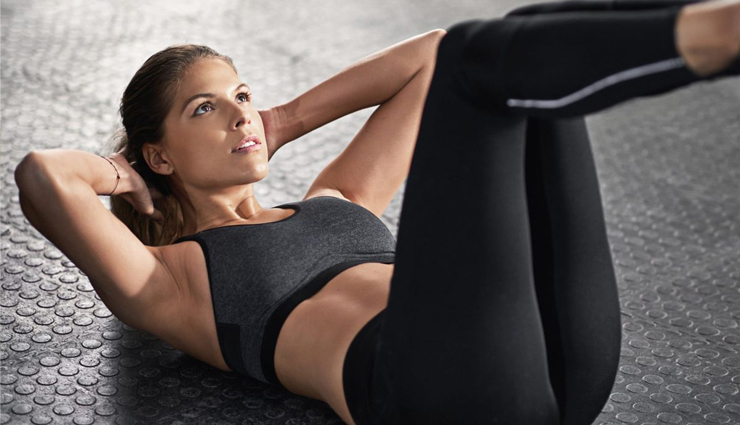
# Reverse Crunch
The reverse crunch primarily targets the lower abdominal muscles. Here are the steps to perform the Reverse Crunch exercise:
- Lie flat on your back on a mat or a comfortable surface with your legs extended and your arms relaxed by your sides.
- Engage your core muscles by drawing your navel towards your spine and pressing your lower back into the mat.
- Bend your knees and lift your feet off the ground so that your knees are directly above your hips, creating a 90-degree angle with your legs. This is your starting position.
- Inhale deeply, and as you exhale, engage your abdominal muscles and curl your hips off the mat, bringing your knees towards your chest.
- Keep your lower back pressed into the mat throughout the exercise to maintain proper form and protect your spine.
- As you lift your hips off the mat, focus on using your lower abdominal muscles to initiate the movement and avoid using momentum or swinging your legs.
- Hold the contracted position for a brief moment, squeezing your abdominal muscles at the top of the movement.
- Inhale again, and as you exhale, slowly lower your hips back down to the starting position with control, extending your legs back out to a 90-degree angle.
- Repeat the movement for the desired number of repetitions, focusing on engaging your core and maintaining proper form.
- Remember to breathe continuously, inhaling before lifting your hips and exhaling as you lower them back down.
- Avoid any jerky or forced movements and maintain a steady and controlled rhythm.
- To make the exercise more challenging, you can place your hands behind your head or extend your legs straight up towards the ceiling instead of keeping them bent.
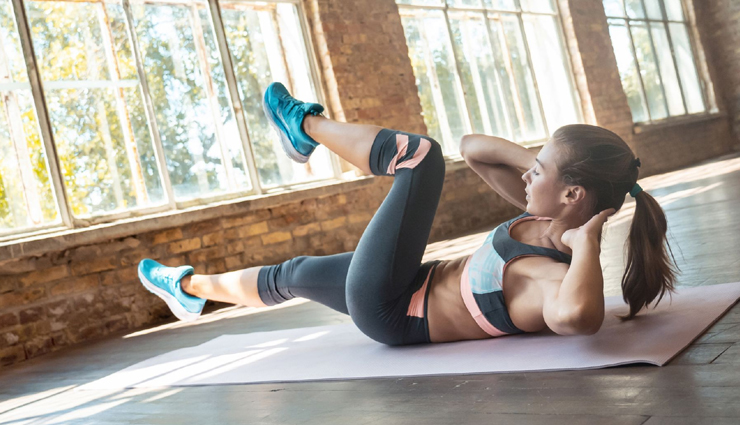
# Bicycle Crunch
The bicycle crunch engages both the upper and lower abdominal muscles, as well as the obliques. Here are the steps to perform the Bicycle Crunch exercise:
- Lie flat on your back on a mat or a comfortable surface with your knees bent and feet flat on the floor. Place your hands gently behind your head, elbows pointing out to the sides.
- Engage your core muscles by drawing your navel towards your spine and pressing your lower back into the mat.
- Lift your head, neck, and shoulders off the mat, keeping your gaze towards the ceiling. This is your starting position.
- Simultaneously lift your feet off the ground, bending your knees to a 90-degree angle.
- Inhale deeply, and as you exhale, twist your upper body to bring your right elbow towards your left knee while extending your right leg straight out.
- At the same time, bring your left knee towards your chest, keeping it bent.
- As you twist, focus on rotating through your core and maintaining a controlled and controlled movement.
- Hold the twisted position for a brief moment, feeling the contraction in your obliques.
- Inhale again, and as you exhale, switch sides by extending your left leg straight out while bringing your right knee towards your chest, and twisting your upper body to bring your left elbow towards your right knee.
- Continue to alternate sides in a cycling motion, as if pedaling a bicycle.
- Maintain a steady and controlled rhythm, focusing on engaging your core muscles throughout the exercise.
- Repeat the movement for the desired number of repetitions or time, maintaining proper form and control.
- Remember to breathe continuously, inhaling before twisting and exhaling as you twist and switch sides.
- To make the exercise more challenging, you can increase the speed of the cycling motion or add a pause at the twisted position.
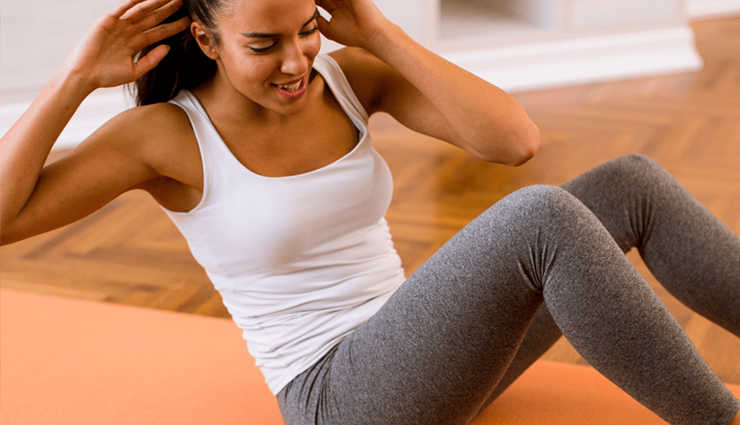
# Oblique Crunch
The oblique crunch specifically targets the oblique muscles, which are located on the sides of your abdomen. Here are the steps to perform the Oblique Crunch exercise:
- Start by lying on your side on a mat or a comfortable surface. You can choose to rest on your forearm or extend your arm straight out along the mat for support.
- Stack your legs on top of each other and extend them fully.
- Engage your core muscles by drawing your navel towards your spine and maintaining a straight alignment from your head to your feet.
- Place your top hand lightly behind your head, elbow pointing out to the side, or rest it on your hip.
- Inhale deeply, and as you exhale, lift your upper body off the mat by contracting your oblique muscles. Focus on bringing your shoulder towards your hip, rather than lifting straight up.
- Keep your lower body and legs stable and avoid using momentum or swinging your legs.
- Hold the contracted position for a brief moment, squeezing your oblique muscles.
- Inhale again, and as you exhale, slowly lower your upper body back down to the starting position with control.
- Repeat the movement for the desired number of repetitions, focusing on engaging your oblique muscles and maintaining proper form.
- Remember to breathe continuously, inhaling before lifting your upper body and exhaling as you lower it back down.
- Complete the desired number of repetitions on one side, then switch to the other side and repeat the exercise.
- Maintain a steady and controlled rhythm throughout the exercise, avoiding any jerky or forced movements.
- To make the exercise more challenging, you can hold a dumbbell or a medicine ball against your chest or perform the exercise on an incline bench.
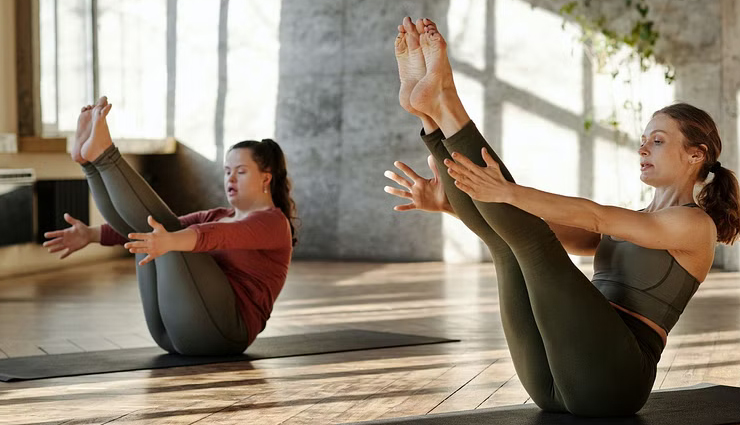
# Vertical Leg Crunch
The vertical leg crunch is an effective exercise for targeting the upper and lower abdominal muscles. Here are the steps to perform the Vertical Leg Crunch exercise:
- Lie flat on your back on a mat or a comfortable surface with your legs extended straight up towards the ceiling. Keep your arms relaxed by your sides.
- Engage your core muscles by drawing your navel towards your spine and pressing your lower back into the mat.
- Inhale deeply, and as you exhale, lift your upper body off the mat by contracting your abdominal muscles.
- Reach your arms towards your toes, trying to touch your ankles or shins. Imagine that you're reaching for the ceiling with your fingertips.
- Keep your legs extended straight up throughout the exercise, perpendicular to the floor. This is your starting position.
- As you lift your upper body, focus on using your abdominal muscles to initiate the movement, rather than pulling with your neck or using momentum.
- Hold the contracted position for a brief moment, feeling the contraction in your abdominal muscles.
- Inhale again, and as you exhale, slowly lower your upper body back down to the starting position with control, maintaining the extended leg position.
- Repeat the movement for the desired number of repetitions, focusing on engaging your core and maintaining proper form.
- Remember to breathe continuously, inhaling before lifting your upper body and exhaling as you lower it back down.
- Avoid any jerky or forced movements and maintain a steady and controlled rhythm.
- To make the exercise more challenging, you can hold a dumbbell or a medicine ball in your hands or add a twist by reaching towards one side as you lift your upper body.
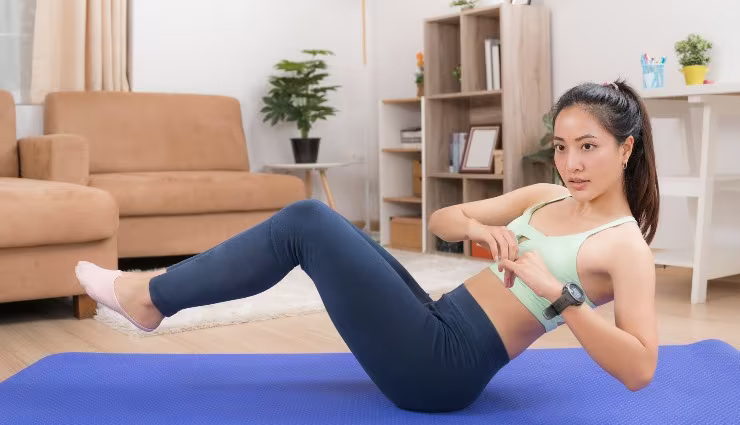
# Russian Twist
The Russian twist is a dynamic exercise that engages the entire core, including the rectus abdominis and obliques. Here are some tips to help you perform the Russian Twist exercise effectively:
- Sit on the floor with your knees bent and feet flat on the ground. Lean back slightly while keeping your back straight and core engaged. It's important to maintain good posture throughout the exercise.
- Before starting the movement, engage your core muscles by drawing your navel towards your spine. This will help stabilize your torso and protect your lower back.
- Initiate the movement by twisting your torso from side to side, rotating your upper body without moving your hips. The twisting motion should come from your waist and oblique muscles.
- As you twist, focus on keeping your hips stable and grounded. Avoid rocking or shifting your hips from side to side, as this can reduce the effectiveness of the exercise.
- Perform the exercise in a slow and controlled manner. Avoid using momentum or swinging your arms, as this can put strain on your back and reduce the engagement of your core muscles.
- Twist as far as you comfortably can without compromising your form or feeling any discomfort. The goal is to engage your oblique muscles, not to force excessive twisting.
- Breathe steadily throughout the exercise, inhaling and exhaling as you twist from side to side. Maintaining a consistent breathing pattern will help you stay focused and relaxed.
- If you find the exercise too easy, you can increase the difficulty by holding a weight or medicine ball in your hands while twisting. This adds resistance and challenges your core muscles further.
- You can modify the Russian Twist by lifting your feet off the ground, creating a more challenging balance element. However, ensure that you have sufficient core strength and stability before attempting this variation.
- If you're new to the Russian Twist or abdominal exercises in general, start with a comfortable range of motion and gradually increase the intensity and difficulty as your strength improves. It's important to listen to your body and avoid overexertion or strain.
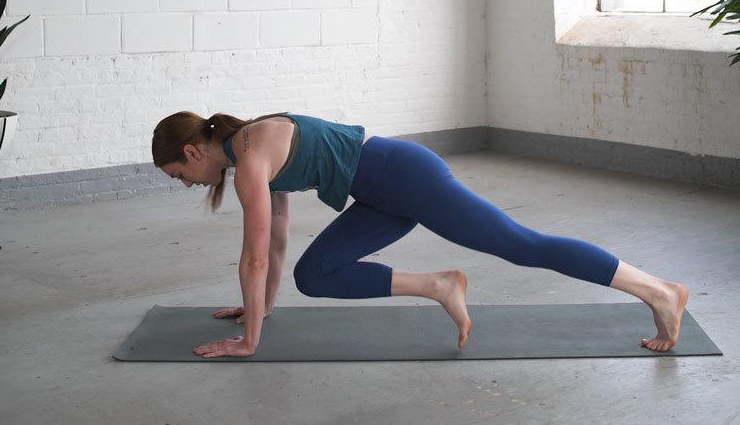
# Plank Crunch
The plank crunch combines the benefits of the plank exercise with a crunch movement, targeting the entire core. Here are the steps to perform the Plank Crunch:
- Start by getting into a high plank position with your hands directly under your shoulders and your legs extended straight behind you. Your body should form a straight line from head to heels.
- Engage your core muscles by drawing your navel towards your spine and maintaining a strong and stable plank position.
- From the plank position, lift your right hand off the ground and bring your right elbow towards your left knee, crunching your core.
- At the same time, lift your left foot off the ground and bring your left knee towards your right elbow.
- Contract your abs as you bring your elbow and knee together, feeling the crunch in your oblique muscles.
- Hold the contracted position for a brief moment, squeezing your abs.
- Slowly return your right hand and left foot back to the starting position, maintaining the plank position.
- Repeat the movement on the opposite side, lifting your left hand and right foot, bringing your left elbow towards your right knee, and your right knee towards your left elbow.
- Continue alternating sides, performing controlled and controlled movements.
- Aim to maintain a stable plank position throughout the exercise, avoiding any sagging or lifting of your hips.
- Breathe steadily throughout the exercise, inhaling as you prepare for the movement and exhaling as you crunch your core.
- Start with a few repetitions and gradually increase the number as you build strength and stability in your core.
- It's important to listen to your body and work within your own limits. If you experience any pain or discomfort, modify the exercise or consult with a fitness professional for guidance.
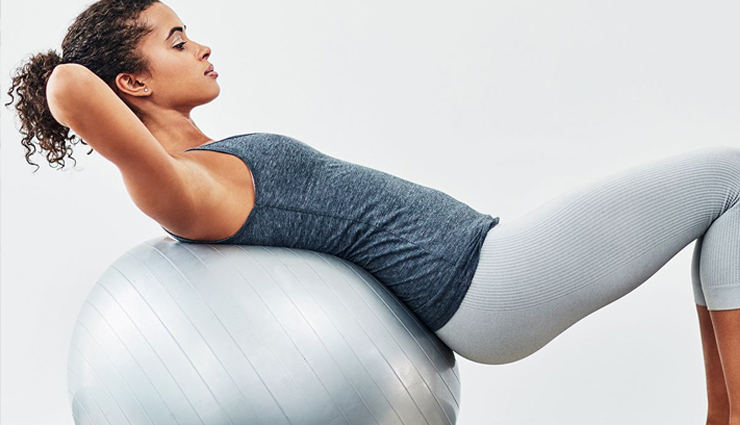
# Stability Ball Crunch
The stability ball crunch adds an element of instability, challenging your core muscles even further. Here are the steps to perform the Stability Ball Crunch exercise:
- Start by sitting on a stability ball and carefully walk your feet forward, rolling the ball underneath you until your lower back is supported by the ball. Your knees should be bent at a 90-degree angle, and your feet should be flat on the floor.
- Place your hands lightly behind your head, elbows pointing out to the sides, or you can cross your arms over your chest if that feels more comfortable.
- Engage your core muscles by drawing your navel towards your spine and maintaining a stable position on the ball.
- Inhale deeply, and as you exhale, curl your upper body forward by contracting your abdominal muscles. Focus on using your abs to lift your shoulders and upper back off the ball.
- As you curl forward, avoid pulling on your neck or using momentum to lift yourself up. Keep the movement controlled and focused on your core.
- Hold the contracted position for a brief moment, feeling the crunch in your abdominal muscles.
- Inhale again, and as you exhale, slowly lower your upper body back down to the starting position, allowing your back to gently curve over the ball.
- Repeat the movement for the desired number of repetitions, focusing on engaging your core and maintaining proper form.
- Remember to breathe continuously, inhaling before lifting your upper body and exhaling as you lower it back down.
- Avoid any jerky or forced movements and maintain a steady and controlled rhythm.
- To make the exercise more challenging, you can increase the range of motion by curling up higher or hold a weight against your chest.
- As with any exercise, it's important to listen to your body and work within your own limits. If you experience any pain or discomfort, modify the exercise or consult with a fitness professional for guidance.
Note: It's always a good idea to consult with a fitness professional before starting any new exercise program, especially if you have any pre-existing medical conditions or injuries.





